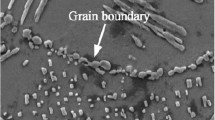Abstract
The present work focused on the development and application of artificial neural network (ANN) models to predict the cyclic behavior of a commercially available, binary Ni49.9 Ti50.1 (at. %) shape memory alloy, also known as 55NiTi (55 wt% Ni). This 55NiTi material is well known in the aerospace industry for design of actuators (which operate under several thermomechanical cycles). Using only the predominant factors that influence the cyclic behavior of the alloy as input variables, simple yet practical models are generated that are able to predict the material responses under several stress magnitudes and hundreds of cycles. A comparison between the predicted temperature–strain responses and available experimental data demonstrated a high level of accuracy of the developed ANN models. It was found that the cyclic response of the 55NiTi alloy was more sensitive to the stress magnitude (in comparison with the effect of the other input parameters considered in the study).









Similar content being viewed by others
Data availability
The raw/processed data required to reproduce these findings can be shared with the reader upon request.
Code availability
The complete MATLAB source code used to produce these findings cannot be shared at this time as it forms part of an ongoing study.
References
Otsuka K, Wayman CM (1999) Shape memory materials. Cambridge University Press
Song G, Ma N, Li HN (2006) Applications of shape memory alloys in civil structures. Eng Struct 28(9):1266–1274. https://doi.org/10.1016/j.engstruct.2005.12.010
Jani JM, Leary M, Subic A, Gibson MA (2014) A review of shape memory alloy research, applications and opportunities. Mater Des 56:1078–1113. https://doi.org/10.1016/j.matdes.2013.11.084
Kirsch SM, Welsch F, Michaelis N, Schmidt M, Wieczorek A, Frenzel J, Eggeler G, Schütze A, Seelecke S (2018) NiTi-Based elastocaloric cooling on the macroscale: from basic concepts to realization. Energy Tech 6(8):1567–1587. https://doi.org/10.1002/ente.201800152
Padula S, Qiu S, Gaydosh D, Noebe R, Bigelow G, Garg A, Vaidyanathan R (2012) Effect of upper-cycle temperature on the load-biased, strain-temperature response of NiTi. Metall and Mater Trans A 43(12):4610–4621. https://doi.org/10.1007/s11661-012-1267-5
Padula, I. S. A. (2016). U.S. Patent No. 9,476,113. Washington, DC: U.S. Patent and Trademark Office.
Padula SA II, Gaydosh D, Saleeb AF et al (2014) Transients and Evolution in NiTi. Exp Mech 54(5):709–715. https://doi.org/10.1007/s11340-013-9840-4
Rao A, Srinivasa AR, Reddy JN (2015) Introduction to shape memory alloys. In: Design of shape memory alloy (SMA) actuators. Springer, Cham, pp. 1–31. https://doi.org/10.1007/978-3-319-03188-0
Cisse C, Zaki W, Zineb TB (2016) A review of constitutive models and modeling techniques for shape memory alloys. Int J Plast 76:244–284. https://doi.org/10.1016/j.ijplas.2015.08.006
Owusu-Danquah JS, Saleeb AF (2017) On the cyclic stability of the thermomechanical behavior of NiTi shape memory cylindrical actuators. Euro J Mech-A/Solids 64:143–159. https://doi.org/10.1016/j.euromechsol.2017.02.005
Adarsh SH, Sampath V (2020) Prediction of high temperature deformation characteristics of an Fe-based shape memory alloy using constitutive and artificial neural network modelling. Mater Today Commun 22:100841. https://doi.org/10.1016/j.mtcomm.2019.100841
Zhang W (2010) Computational ecology: artificial neural networks and their applications. World Scientific
Elkatatny S, Tariq Z, Mahmoud M, Abdulraheem A, Mohamed I (2019) An integrated approach for estimating static Young’s modulus using artificial intelligence tools. Neural Comput Appl 31(8):4123–4135. https://doi.org/10.1007/s00521-018-3344-1
Maity G, Roy SK, Verdegay JL (2019) Analyzing multimodal transportation problem and its application to artificial intelligence. Neural Comput Appl. https://doi.org/10.1007/s00521-019-04393-5
Karim MR, Rahman A, Jares JB, Decker S, Beyan O (2019) A snapshot neural ensemble method for cancer-type prediction based on copy number variations. Neural Comput Appl. https://doi.org/10.1007/s00521-019-04616-9
Malik, N. (2005). Artificial neural networks and their applications. arXiv preprint cs/0505019.
Linjordet, T., & Balog, K. (2019, April). Impact of Training Dataset Size on Neural Answer Selection Models. In: European Conference on Information Retrieval. Springer, Cham, pp. 828–835
Karakoc O, Hayrettin C, Bass M, Wang SJ, Canadinc D, Mabe JH, Karaman I (2017) Effects of upper cycle temperature on the actuation fatigue response of NiTiHf high temperature shape memory alloys. Acta Mater 138:185–197. https://doi.org/10.1016/j.actamat.2017.07.035
Kciuk M, Chwastek K, Kluszczyński K, Szczygłowski J (2016) A study on hysteresis behaviour of SMA linear actuators based on unipolar sigmoid and hyperbolic tangent functions. Sens Actuators, A 243:52–58. https://doi.org/10.1016/j.sna.2016.02.012
Gu X, Zaki W, Morin C, Moumni Z, Zhang W (2015) Time integration and assessment of a model for shape memory alloys considering multiaxial nonproportional loading cases. Int J Solids Struct 54:82–99. https://doi.org/10.1016/j.ijsolstr.2014.11.005
Funding
This research did not receive any specific grant from funding agencies in the public, commercial, or not-for-profit sectors.
Author information
Authors and Affiliations
Corresponding author
Ethics declarations
Conflict of interest
The authors declare that they have no known competing financial interests or personal relationships that could have appeared to influence the work reported in this paper.
Additional information
Publisher's Note
Springer Nature remains neutral with regard to jurisdictional claims in published maps and institutional affiliations.
Rights and permissions
About this article
Cite this article
Owusu-Danquah, J.S., Bseiso, A. & Allena, S. Artificial neural network models to predict the response of 55NiTi shape memory alloy under stress and thermal cycles. Neural Comput & Applic 34, 3829–3842 (2022). https://doi.org/10.1007/s00521-021-06643-x
Received:
Accepted:
Published:
Issue Date:
DOI: https://doi.org/10.1007/s00521-021-06643-x




